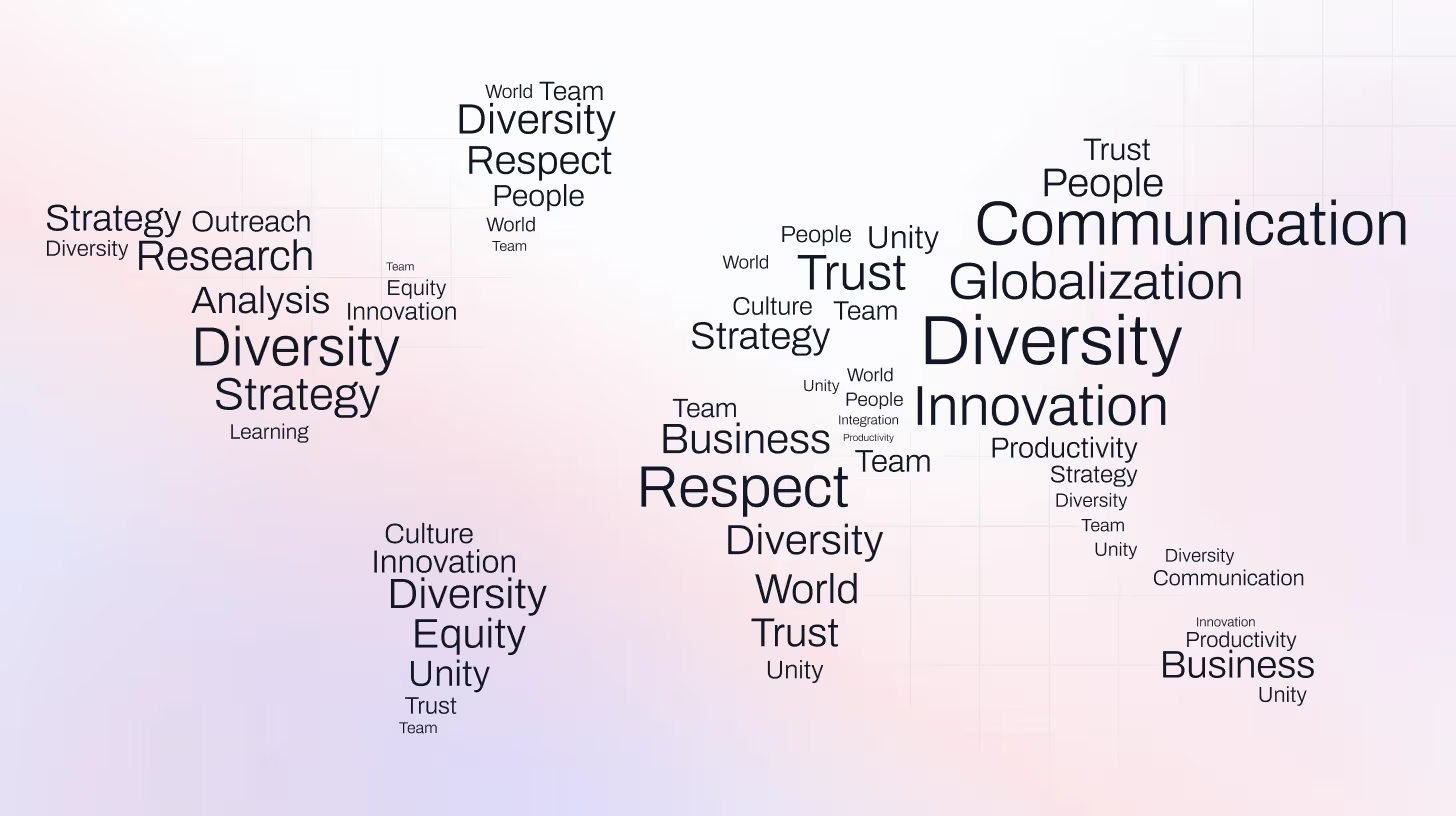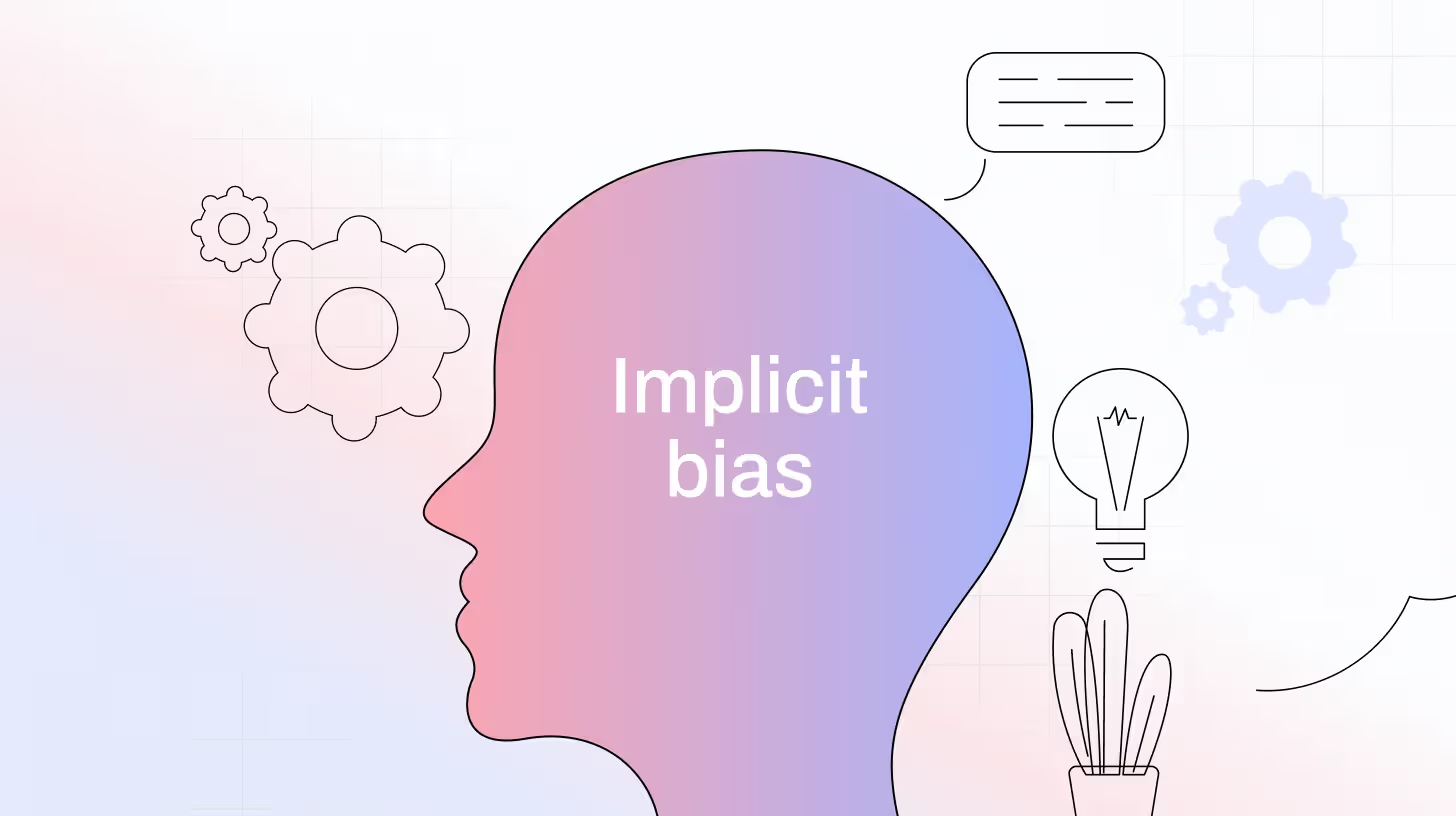 Blog
Blog Inclusion Survey Questions to Promote Workplace Diversity
Inclusion Survey Questions to Promote Workplace DiversityInclusion Survey Questions to Promote Workplace Diversity

Let’s say your company just hired a diverse group of new employees. On paper, it looks like progress. But in meetings, only a few voices dominate. Some people rarely speak up. Others quietly opt out of team lunches, ERG groups, or Slack chats.
No one’s saying there’s a problem, but something feels… off.
That’s where inclusion surveys come in. They uncover what your employees won’t say out loud. They help you understand who feels seen, who feels excluded, and what needs to change to build a truly inclusive culture.
This blog gives you 40+ thoughtful inclusion survey questions for 2025, plus tips to make your surveys feel safe, respectful, and genuinely inclusive.
What is an inclusion survey
An inclusion survey is a powerful tool used to gather honest feedback about diversity, equity, and inclusion within a workplace or community. It helps leaders assess the overall environment and understand how employees from different backgrounds experience the culture.
By asking clear, direct questions around respect, fairness, and equal opportunity, the survey uncovers both strengths and areas for improvement. The insights gained can guide more inclusive policies and foster a culture where everyone feels seen, heard, and valued.
Creating effective inclusion survey questions requires thoughtful design. Experts recommend using clear, neutral language to avoid introducing bias. Including a mix of scaled (e.g., agree/disagree) and open-ended questions allows for both measurable data and deeper insights. Done right, inclusion surveys provide the foundation for continuous learning and long-term cultural growth.

40+ Inclusion Survey Questions to Ask
Explore these 40+ survey questions on diversity and inclusion organized by theme to help you gather honest, actionable feedback and build a more inclusive workplace in 2025 and beyond.
Demographic & Representation Inclusion
- How do you currently identify your gender?
- What is your primary language?
- What is your age range?
- Which racial, ethnic, or cultural background best describes you?
- Do you identify as part of a minority or underrepresented group?
- I see people like me represented in leadership positions.
- The company hires individuals from a wide range of backgrounds.
- I believe everyone here has equal access to growth opportunities.
Accessibility & Support at Work
- Do you know how to request a workplace accommodation if needed?
- Have you encountered any physical or digital accessibility issues here?
- Do you find our website, portals, and platforms easy to navigate?
- Would captioning or transcription services improve your experience with meetings or video content?
- Are our physical workspaces (offices, restrooms, entrances, etc.) easily navigable for everyone?
- Is signage in your workplace clear, visible, and helpful for navigation?
- I have access to the resources and accommodations I need to do my job well.
- Our workplace and tools are accessible to employees of all abilities.
Workplace Belonging & Inclusion
- Do you feel recognized in your current role at [company]?
- Do you feel included in team discussions and decisions?
- How comfortable do you feel sharing your ideas or perspectives with coworkers?
- Do you believe our company policies support an inclusive and equitable workplace?
- I feel a strong sense of belonging at [Company Name].
- I feel safe being my authentic self at work.
- My team values my contributions and input.
Cultural Awareness & Inclusive Leadership
- How well does your team handle cultural differences?
- Do you feel comfortable sharing cultural or religious aspects of your life at work?
- How well does your organization celebrate cultural diversity?
- Have you participated in any cultural competency training?
- Is there adequate representation of diverse cultures in leadership or decision-making roles?
- My manager demonstrates inclusive behavior.
- Leadership communicates a clear commitment to inclusion and diversity.
Feedback Culture & Continuous Inclusion Improvement
- How inclusive do you feel our current practices are?
- Which recent inclusion effort or initiative stood out to you?
- Are there any specific areas where you feel inclusion is missing or needs work?
- Do you feel comfortable suggesting ideas to improve inclusion?
- Have you experienced any challenges or barriers related to inclusion?
- I feel safe giving feedback on inclusion-related issues.
- The company acts on feedback related to DEI.
Voice & Visibility in Decision-Making
- I have opportunities to contribute to decisions that impact my work.
- Do you feel your ideas are considered during team planning or strategy discussions?
- I feel my background and experiences are valued in decision-making processes.
- Are employees from diverse backgrounds equally represented in high-impact decisions?
- I am encouraged to speak up and share new ideas, even if they challenge the norm.
Discrimination and Psychological Safety
- I feel safe to express concerns without fear of retaliation or judgment.
- Have you ever experienced or witnessed discrimination, bias, or microaggressions at work?
- Leaders and managers respond appropriately when discrimination or bias is reported.
- I can be honest about mistakes or challenges without negative consequences.

6 Tips for Creating More Inclusive Surveys
Demographic questions can be tricky. Sure, you want to understand your audience, who they are, what they need, but things like gender, race, religion, and disability? That’s personal stuff.
So, how do you ask those questions without making people feel uncomfortable, boxed in, or excluded?
Let’s break it down.
1. Be Honest About Why You’re Asking
No one wants to feel like a data point. So if you’re asking about gender, race, or income, let people know why. A simple line at the start of your survey can make all the difference:
“We ask these questions to help make our services more inclusive and better reflect our community.”
2. Don’t Make People Choose From a Short List
Imagine being non-binary and seeing “Male / Female” as your only options. Or being biracial with just one ethnicity to pick from. Yikes.
Let people self-identify when it makes sense.
Example:
What is your gender?
☐ Woman
☐ Man
☐ Non-binary
☐ Prefer to self-describe: ______
☐ Prefer not to say
This small change shows respect and gives people room to be themselves.
3. Let People Skip Personal Questions
Here’s a wild stat: 27% of people say they’ll quit a survey if they can’t skip a question.
So yeah, don’t force it. If someone doesn’t feel comfortable answering a question, that’s okay. Let them pass. You’ll get better quality data from people who feel safe sharing it.
4. Use Skip Logic to Make It Smarter
Ever select “No religion” in a survey, then get asked how often you go to church? That’s lazy survey design, and it turns people off.
Skip logic fixes that. It sends people down a path that actually makes sense based on their answers. It’s respectful and makes the whole experience smoother.
5. Watch Your Words
Language matters. The way you phrase things can make people feel included or totally alienated.
Avoid stuff like:
- “What does your husband or wife do?” (assumes straight relationships)
- “Does your doctor make himself available?” (assumes gender)
- “Do you live in your own home?” (assumes home ownership is the norm)
Instead, go for neutral, open language. Ask about “partner,” “healthcare provider,” or “living situation” instead.
6. Add Context When It’s Needed
Tell people why you’re asking certain questions, especially personal ones. A brief introduction or note helps build trust and enhances response quality.
Example: “We ask this to help make sure everyone’s voice is represented in our decisions.”
Create a DEI Survey with TheySaid
Building a more inclusive workplace starts with better questions—and TheySaid makes it easy.
Just tell the AI what you want to learn (e.g., “team inclusion feedback”), and it’ll create a tailored DEI survey in seconds. You can customize questions, share via email or Slack, and get real-time AI insights on what your team really thinks.
Try TheySaid for your next DEI survey.
Key Takeaways
- Inclusion surveys reveal the unspoken truths behind your workplace culture, especially for underrepresented voices.
- Good questions drive better insights—focus on themes like belonging, accessibility, leadership, and psychological safety.
- Use both scaled and open-ended questions to balance data and depth.
- Demographic questions must be optional and inclusive, allowing people to self-identify or skip if needed.
- Use skip logic to avoid irrelevant or alienating questions that don’t apply to all respondents.
- Watch your language—neutral, respectful phrasing makes surveys feel safer and more inviting.
- TheySaid’s AI surveys make it easy to create, customize, and analyze DEI surveys in minutes, with real-time feedback you can act on.
FAQs
Why should companies run inclusion surveys?
Inclusion surveys help companies identify gaps in diversity, equity, and inclusion efforts. They provide honest, anonymous feedback that can guide more inclusive policies, practices, and leadership decisions.
How often should I run inclusion surveys?
At least once a year is recommended, but quarterly or biannual pulse surveys work well for tracking progress over time, especially after launching a new DEI initiative.
How do I encourage employees to take a diversity survey?
Build trust by being transparent. Tell employees why you’re collecting this information, how it will help improve the workplace, and make the survey optional and anonymous.















.svg)